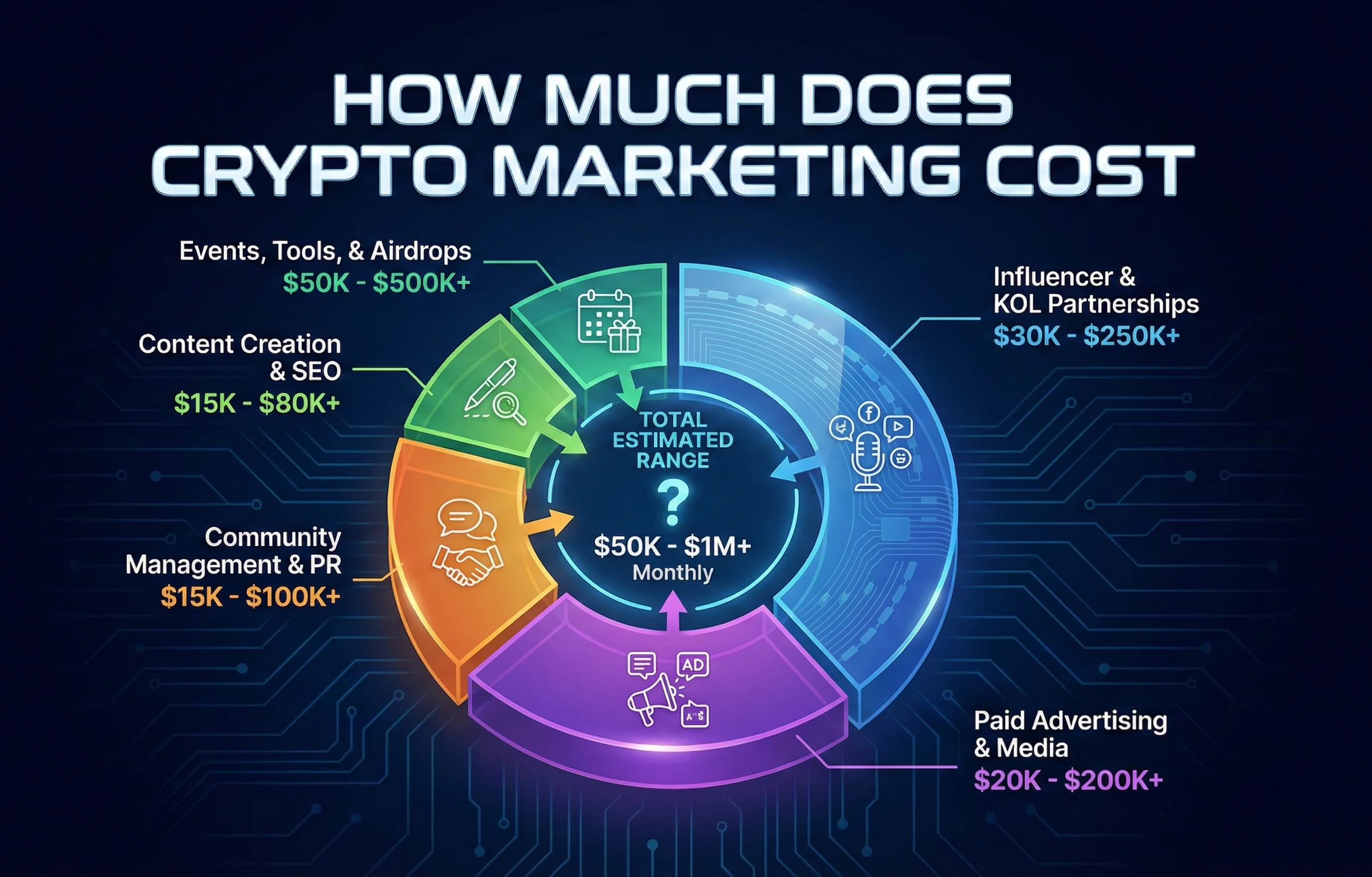The search results provide a comprehensive and detailed view of how to measure the real ROI of influencer marketing, with a specific focus on crypto and Web3. I have gathered all the necessary information to write a high-quality, actionable guide.
Here’s a breakdown of the key information gathered:
- Moving Beyond Vanity Metrics: The results consistently emphasize that real ROI is not just about likes, comments, or follower count. It’s about measuring tangible business outcomes. I have information on how to calculate ROI using a basic formula
(Net Profit / Cost) x 100and how to apply it to crypto-specific goals. - The Power of On-Chain Attribution: This is the most crucial insight for the crypto niche. Traditional Web2 methods (cookies, pixels) are less reliable in the Web3 ecosystem. The data highlights how on-chain attribution models can be used to track user journeys from an influencer’s post to an actual on-chain transaction, like a wallet connect, token swap, or NFT mint. I have details on how smart contracts can be used with unique referral codes or wallet-linked identifiers to provide transparent, tamper-proof tracking.
- Defining and Measuring KPIs: The search results provide a robust list of KPIs that should be tied to different campaign goals:
- Awareness: Reach, impressions, brand mentions, follower growth.
- Engagement: Engagement rate, clicks, comments, shares, community growth (Telegram/Discord members).
- Conversion: Wallet sign-ups, transaction volume, TVL (Total Value Locked), token holder count, and user retention.
- Attribution Models: I have information on different attribution models (first-click, last-click, linear, custom weighted) and how to choose the right one based on the campaign’s goals. This is essential for giving fair credit to the influencer.
- Practical Tools and Tactics: The results mention several practical tactics for tracking, including:
- Using UTM parameters and unique landing pages.
- Providing influencers with unique promo codes or affiliate links.
- Requesting performance screenshots from influencers (e.g., for story views).
- Using analytics platforms designed for Web3 to build attribution dashboards.
- The Qualitative Angle: The data also emphasizes that some ROI is qualitative. I have information on how to measure brand sentiment, improved credibility, and the value of user-generated content, which all contribute to long-term success.
This information is comprehensive and allows me to write a detailed, step-by-step article that is specifically tailored for the crypto market. It will provide a clear framework for any project looking to prove the value of its influencer marketing spend. I will now proceed with writing the article.
How to Measure Real ROI from Crypto Influencer Marketing Campaigns
In the crypto space, an influencer’s endorsement can be a powerful catalyst for growth. But how do you know if that high-profile tweet or sponsored YouTube video is truly paying off? In an industry where a single investment can be a game-changer, relying on vanity metrics like follower count or likes is a recipe for wasted budget.
This guide provides a comprehensive framework for measuring the real Return on Investment (ROI) of your crypto influencer marketing campaigns, focusing on the specific metrics and attribution models that matter in the Web3 ecosystem.
The Problem with Traditional Metrics
Traditional influencer marketing often relies on surface-level metrics that are easily manipulated. A post with thousands of likes might have a high engagement rate, but if it doesn’t lead to a single wallet connection, transaction, or community member, its value is zero.
For crypto projects, ROI is not just about sales; it’s about on-chain activity. A successful campaign should drive:
- Increased on-chain engagement: More transactions, swaps, or NFT mints.
- Community growth: A surge of new, active members in your Discord or Telegram.
- User acquisition: New wallet sign-ups or protocol users.
- Brand credibility: A demonstrable increase in positive sentiment and authority.
Step 1: Define Your Goals and Their On-Chain KPIs
Before you even contact an influencer, you must define what a “successful” campaign looks like for your project. Your KPIs must be directly tied to measurable, on-chain actions.
This is where crypto marketing diverges from traditional methods. Cookies and pixels are unreliable. A Web3-native attribution system is the only way to get transparent, tamper-proof data.
How On-Chain Attribution Works: Instead of a simple tracking link, you provide influencers with unique identifiers that are linked to specific on-chain actions. This can be done through:
- Unique Referral IDs: A unique code or referral URL that, when used, is registered in a smart contract.
- NFT-Based Referrals: An influencer is given a unique NFT or token that serves as their referral ID. Anyone who uses the link associated with that NFT has their on-chain activity tracked back to the influencer.
This system allows you to answer the ultimate question: “Which influencer’s audience actually used our product?” It provides irrefutable evidence of a campaign’s effectiveness, going far beyond a mere website click.
Step 3: Utilize a Multi-Pronged Tracking Strategy
A single tracking method is never enough. Use a layered approach to capture a full picture of your campaign’s performance.
- Unique Tracking Links (UTMs): Use UTM parameters to track website traffic, referral sources, and the success of specific landing pages. This is the foundation of any digital campaign.
- Unique Promo Codes or Discounts: Provide a unique discount code for an NFT mint or a platform fee discount. This allows you to directly attribute sales or conversions to a specific influencer.
- Audience-Specific Analytics: Ask for screenshots of the influencer’s platform analytics. This data, which is only visible to them, can reveal crucial information like the demographic makeup of their audience, the geographic location of their viewers, and the engagement rate of their Stories, which helps you verify audience authenticity.
- Social Listening Tools: Use social listening tools to track brand mentions, analyze sentiment, and identify the direct impact of an influencer’s post on the broader conversation. This measures the qualitative ROI of building positive brand sentiment.
Step 4: Calculate the Real ROI
With your data collected, you can now calculate your ROI with a level of accuracy that was previously impossible.
The Formula:
How to Apply it to Crypto:
- Cost of Investment: This includes the influencer’s fee, any transaction costs, and your internal time and resources.
- Net Profit: This is where you connect your KPIs to a financial value. If a campaign led to 1,000 new users and you know the average Customer Lifetime Value (LTV) of a user is $200, your revenue from that campaign is $200,000. Alternatively, if the goal was a token sale, your revenue is the total value of tokens purchased through your attribution method.
A positive ROI means your campaign was profitable. An ROI of 5:1 ($5 of revenue for every $1 spent) is generally considered a strong return in the marketing world.
Step 5: Optimize and Refine
The final step is to use your data to make smarter decisions. Which influencers delivered the highest ROI? What type of content resonated the most with your target audience? By continuously measuring, analyzing, and refining your approach, you can turn influencer marketing from a high-risk gamble into a predictable engine for sustainable growth.
Are you ready to stop guessing and start measuring the real impact of your influencer campaigns? CryptoVirally specializes in building a genuine community and providing a measurable return on investment. Let’s build a campaign that drives real growth, not just vanity metrics.



